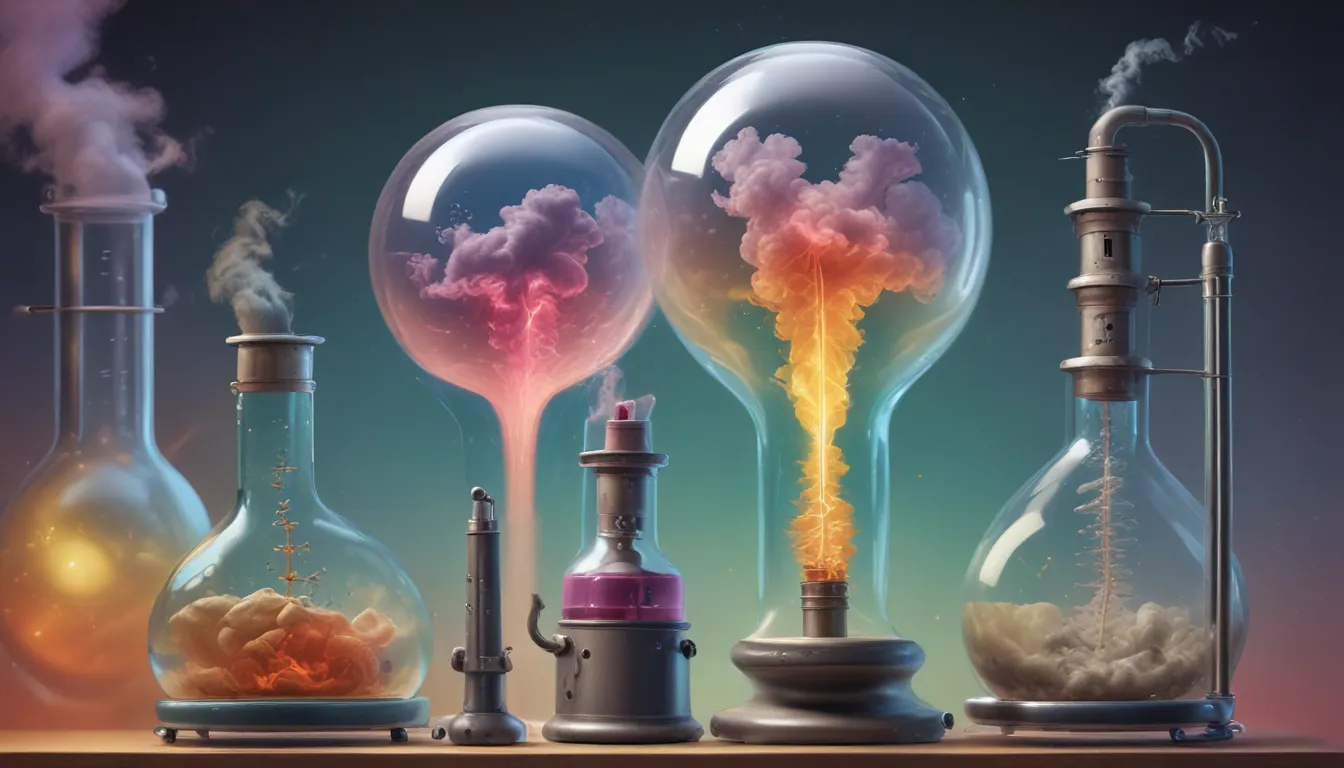A Note About Images: The images used in our articles are for illustration purposes only and may not exactly match the content. They are meant to engage readers, but the text should be relied upon for accurate information.
Are you curious about the mysterious world of gases and the laws that govern them? Dive into the realm of Gay-Lussac’s Law, a fundamental principle named after the French chemist and physicist Joseph Louis Gay-Lussac. In this article, we will unravel 15 intriguing facts that will not only enhance your understanding of this law but also spark a new appreciation for the intricacies of gas behavior.
The Origin of Gay-Lussac’s Law
In 1802, Joseph Louis Gay-Lussac made a groundbreaking discovery that revolutionized the understanding of gas behavior. He unveiled the relationship between the pressure and temperature of a gas, leading to the formulation of Gay-Lussac’s Law.
The Direct Relationship Unveiled
According to Gay-Lussac’s Law, the volume of a gas is directly proportional to its temperature at a constant pressure. This means that as the temperature of a gas rises, so does the volume it occupies, unveiling a direct relationship between the two variables.
Unveiling the Equation
The mathematical representation of Gay-Lussac’s Law is articulated through the equation: V1/T1 = V2/T2. Here, V1 and T1 represent the initial volume and temperature, while V2 and T2 denote the final volume and temperature, respectively.
Explore the Connection with Charles’s Law
Charles’s Law, another essential gas law, parallels Gay-Lussac’s Law by stating that the volume of a gas is directly proportional to its temperature at a constant pressure. The synergy between these laws sheds more light on gas behavior under varying conditions.
Embracing the Ideal Gas Law
Gay-Lussac’s Law, along with Boyle’s Law and Avogadro’s Law, forms a critical component of the Ideal Gas Law. By integrating these fundamental laws, scientists can comprehensively describe the behavior of an ideal gas in diverse scenarios.
No Bounds to Gas Volume
Unlike some gas laws, Gay-Lussac’s Law does not confine itself to a specific volume range. Whether a gas occupies a small or large volume, this law holds true across various volumes.
Universality Across Gases
Gay-Lussac’s Law stands out for its universality, as it applies to all gases, regardless of their chemical characteristics or composition. This broad applicability underscores the significance of this law in the realm of gas behavior.
Ensuring Gas Cylinder Safety
The principles of Gay-Lussac’s Law are instrumental in ensuring the safe storage and transport of compressed gases in cylinders. By abiding by these principles, the pressure within the cylinders can be regulated to prevent potential hazards.
Diverse Proportional Constants
While the relationship between temperature and volume remains consistently direct, the specific constant of proportionality varies among different gases. This variability adds a layer of complexity to understanding gas behavior.
Realizing Practical Applications
Gay-Lussac’s Law finds practical applications across various fields, including meteorology, chemical engineering, and combustion studies. Its versatile nature contributes to advancements in diverse scientific disciplines.
Unveiling Mysteries: Hot Air Balloons
The operation of hot air balloons hinges on Gay-Lussac’s Law. As the air within the balloon is heated, it expands, leading to a decrease in density and causing the balloon to ascend. This captivating application illustrates the real-world implications of this law.
Navigating Thermodynamics and Engines
For those delving into thermodynamics, Gay-Lussac’s Law serves as a cornerstone principle. Understanding this law is vital for comprehending the operation of engines, such as internal combustion engines, which rely on gas behavior for efficient functionality.
Prioritizing Gas Pressure and Safety
The significance of monitoring gas pressure in industrial processes cannot be understated. Gay-Lussac’s Law underscores the importance of maintaining optimal gas pressure levels to uphold safety standards and prevent potential accidents.
Energizing Laboratory Experimentations
In educational settings, Gay-Lussac’s Law is often taught through practical laboratory experiments that involve measuring gas volumes at varying temperatures. These hands-on experiences enhance understanding and appreciation of this fundamental gas law.
Embracing Continual Exploration
Gay-Lussac’s Law continues to inspire scientific exploration and research. Scientists are unraveling new applications and implications of this law, paving the way for advancements in various scientific fields.
Conclusion: Shedding Light on Gas Behavior
In conclusion, Gay-Lussac’s Law of Gases stands as a foundational principle that sheds light on the intricate relationship between temperature and volume in the world of gases. By delving into the nuances of this law, scientists, engineers, and enthusiasts gain invaluable insights into gas behavior under diverse conditions.
FAQs: Unraveling Common Queries
-
What is Gay-Lussac’s Law of Gases?
Gay-Lussac’s Law states that the pressure of an ideal gas is directly proportional to its absolute temperature, with volume and gas amount kept constant. -
Who discovered Gay-Lussac’s Law of Gases?
French chemist and physicist Joseph Louis Gay-Lussac discovered Gay-Lussac’s Law in the early 19th century, revolutionizing gas studies. -
How is Gay-Lussac’s Law applied in real life?
Gay-Lussac’s Law finds practical applications in various realms, such as engine design, gas production, and weather understanding, showcasing its real-world relevance. -
Is Gay-Lussac’s Law only valid for ideal gases?
Gay-Lussac’s Law is specifically applicable to ideal gases, while real gases may exhibit deviations from ideal behavior. -
Can Gay-Lussac’s Law be combined with other gas laws?
Yes, Gay-Lussac’s Law can be combined with other gas laws, like Boyle’s Law and Charles’ Law, to formulate comprehensive gas behavior equations.
Embrace the captivating world of Gay-Lussac’s Law, where scientific exploration unveils the mysteries of gas behavior, paving the way for new discoveries and innovations. Join us on this enlightening journey through the enigmatic realm of gas laws!






